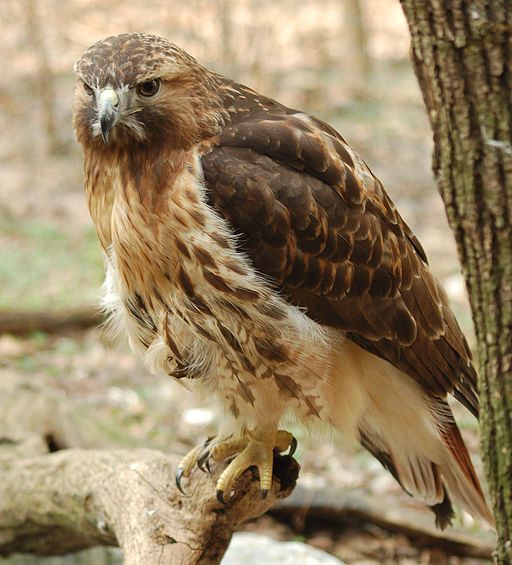 Allied with Europe’s Common Buzzard (Buteo buteo), Red-Tailed Hawk (Buteo jamaicensis) is the Hawk of the New World, living from Alaska to Jamaica. Larger than other Hawks, She is the most widely-distributed diurnal Raptor in North America. Red-Tailed Hawk is easily identified by her magnificent wingspan and the red colors of her tail.
Allied with Europe’s Common Buzzard (Buteo buteo), Red-Tailed Hawk (Buteo jamaicensis) is the Hawk of the New World, living from Alaska to Jamaica. Larger than other Hawks, She is the most widely-distributed diurnal Raptor in North America. Red-Tailed Hawk is easily identified by her magnificent wingspan and the red colors of her tail.A member of the Buteo family of Soaring Hawks, Red-Tailed Hawk is seen perched on treetops and utility poles. Spotting prey, She dives to grasp the animal in her talons. Hunting Small Mammals, Red-Tailed Hawk searches for Voles, her favorite food. In the cities, She eats Cats and Pigeons.
Red-Tailed Hawk uses guile to hunt Rattlesnake. Looking large and threatening, She walks towards Him with her wings outstretched. As Red-Tailed Hawk closes in on Rattlesnake, She brings her wing tips to the front. When He strikes her bloodless wing tips, She strikes with her talons, catching Rattlesnake below the head.
Although Red-Tailed Hawk prefers life in the uplands, She will live in cities. Wherever She lives, Red-Tailed Hawk builds her nest at the forest’s edge or in large trees surrounded by open areas. With Her mate, She fiercely defends their nest against intruders to her nest and territory. However, if Great Horned Owl wants her nest, Red-Tailed Hawk will move to a new nest site. In spite of this, She will use the same nest, which Great Horned Owl took, the following year.
To the Pueblo Peoples, Red-Tailed Hawk was endowed with the same qualities as Eagle. Because She was a messenger of spirit, they called Her “Red Eagle”. Through her flight, Red-Tailed Hawk communicated messages from the Great Mystery. In addition, She brought the rains and the waters necessary for life.
Red-Tailed Hawk teaches commonsense. She uses her commonsense in living with Great Horned Owl. Instead of fighting with the formidable Owl, She prudently decides to not contest His claim. When She hunts Rattlesnakes, Red-Tailed Hawk uses the least vulnerable part of her body. In all She does, Red-Tailed Hawk employs commonsense. She urges you to think before tackling the Great Horned Owl in your life.

